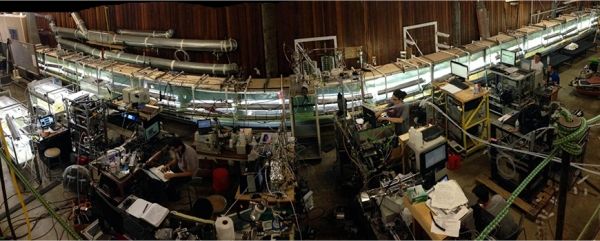Certain types of bacteria and viruses are readily ejected into the atmosphere when waves break while other taxa are less likely to be transported by sea spray into the air, researchers reported May 22.
An interdisciplinary team of scientists from Scripps Institution of Oceanography, the University of California San Diego, and the J. Craig Venter Institute (JCVI) reached this conclusion after replicating a phytoplankton bloom in a unique ocean-atmosphere wave facility developed by scientists in the National Science Foundation-funded Center for Aerosol Impacts on Chemistry of the Environment (CAICE) on the Scripps campus. They found that bacteria and viruses coated by waxy substances or lipids appear in greater quantity and are enriched in sea spray aerosols. According to researchers, the results suggest that the water-repellent properties of the surfaces of these microbes are what make them more likely to be cast out of the ocean as waves break at the sea surface.
The team in the National Science Foundation-funded study included chemists, oceanographers, microbiologists, geneticists, and pediatric medicine specialists who are attempting to understand how far potentially infectious bacteria and viruses can travel and if those that pose the greatest risks to public health are among those most likely to escape the ocean. In previous studies, individual members of the team have characterized sea spray aerosols, which form when waves break and bubbles burst at the ocean surface.
“Some of the bacteria we detected have been found on skin as well as in your gut, so they could be affecting your health—at this point, no one really knows the health effects of breathing in ocean microbes,” said Kim Prather, who has a joint appointment at UC San Diego’s Scripps Institution of Oceanography and the Department of Chemistry and Biochemistry. “We are trying to understand sources of environmental microbes using the unique ocean-atmosphere facilities we have developed here at Scripps. By breaking waves in fresh seawater in an isolated wave channel, UC San Diego is the only place in the world that can directly measure the microbes transferred from the ocean to the atmosphere.”
Read more at University of California - San Diego
Photo: A 2014 experiment at Scripps identified microbes in sea spray aerosols. CREDITS: Christina McCluskey / Colorado St. Univ.


